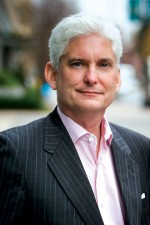 Roger Platt has been a guest lecturer at Columbia, Princeton and Georgetown universities as well as a frequent speaker before business, professional and environmental organizations. He recently earned the LEED Green Associate Professional Credential and is a graduate of Harvard University and the University of San Francisco School of Law. Platt is currently chair of the ULI Responsible Property Investment Council.
Roger Platt has been a guest lecturer at Columbia, Princeton and Georgetown universities as well as a frequent speaker before business, professional and environmental organizations. He recently earned the LEED Green Associate Professional Credential and is a graduate of Harvard University and the University of San Francisco School of Law. Platt is currently chair of the ULI Responsible Property Investment Council.
How do the levels of green building in the United States compare to other countries?
Green building in the U.S. is extensive and not just in the cities where you’d anticipate green building to be heavy. There’s a great uptick of green building activity in places like Iowa, Ohio and in Texas. However, we are now moving to the point where more than half of the LEED buildings will be outside of the United States. The State Department and Commerce Department treat LEED as an export, because when buildings or whole cities are built to LEED standards in the Middle East, say, that gives a huge advantage to U.S. real estate companies, U.S. manufacturing companies and U.S. architects that are already very adept with LEED projects.
What are some of the primary policy and legal issues concerning green building programs?
It’s easier to advance a LEED project where the minimum code standards or requirements are already progressive. Our sort of secret plan for world domination is to try to encourage minimum buildings codes to be responsibly progressive. If the building codes are the floor, we try to raise the ceiling. As long as the floor gets raised through some reasonable building code improvements, then we can keep raising the ceiling without the two getting out of whack.
Also, we like policies that encourage more disclosure about building performance. One mandatory thing we’d like to do is for building owners to have to disclose their energy performance rating. We find that a lot of the NAREIT members are already going to be on to this. But a lot of companies that are otherwise very proud of their ability to save money and perform have horrendously bad-performing buildings. We think when they have to disclose how bad their buildings are, that will make their building a lot better.
We also think green building is more than just about energy efficiency; it’s about a healthy building environment.
What do you anticipate will be some of the more popular green building trends five or 10 years from now?
I think it’s going to be this human health in buildings issue. We have evidence that people in LEED schools have fewer sick days. Those are the health-related benefits that I think building owners will really want to market. I see the health side of the green building phenomenon being the next wave, and it will take time, just as the other aspects of green water conservation and better land-use planning all required some time to digest.
How do the various green building standards out there right now (like LEED and GRESB) compare to one another and what are the advantages to having multiple points of recognition regarding sustainability?
Throughout the world there are different categories of green building systems. Most are generated by the government and they were designed to encourage people to meet different government standards and to meet economic incentives.
From our perspective, when countries begin to develop their own standards it means that the country is more excited about green building. They develop more sophistication and excitement in their country about their contribution to green building. Typically this results in more use of LEED standards in the medium to long term. The percentages of those who use their country’s local standards also want to use international guidelines to compare with the other 114 countries that use LEED standards.